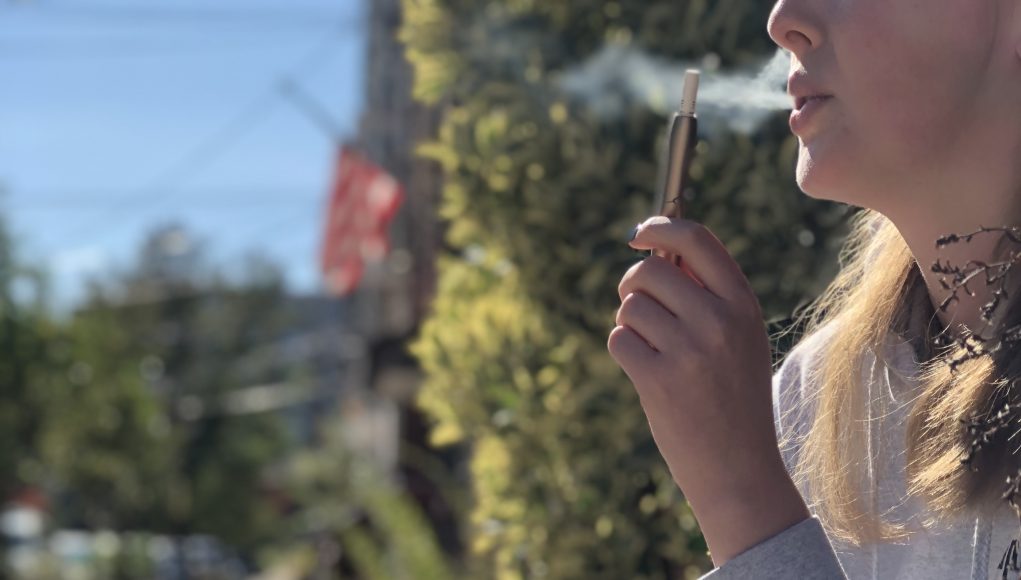As the vaping trend continues to grow, so do reports of related illnesses. E-cigarettes were an $11.5 billion industry in 2018, and the sector is projected to become more profitable even as some states move to ban flavors such as mint and mango that critics say target young people and get them hooked on nicotine.
When an 18-year-old male arrived at the emergency room of New York University’s Winthrop Hospital on Long Island this past July complaining of chest pain, coughing, fever, bellyache and vomiting, Dr. Melodi Pirzada believed he had pneumonia. As the patient got sicker, his mother brought the doctors a cartridge filled with THC oil that belonged to her son.
Since this first case, Pirzada, chief of pediatric pulmonology at NYU Winthrop, has seen many similar cases come in. She now sees at least two per week, although not all of the patients are sick enough to be hospitalized.
With the Centers for Disease Control (CDC) reporting 1,479 lung-injury cases and 33 deaths linked to e-cigarette or vaping products, states have rushed to enact vaping bans. At least six states have attempted to implement emergency bans, although several of those have been at least temporarily blocked by courts. In Florida, State Representative Jackie Toledo (R-Tampa) sponsored a bill (HB 151) that would raise the minimum age to purchase e-cigarettes from 18 to 21 as well as ban the sale of flavored liquid nicotine.
Andrea Mendieta, a 20-year-old from Florida who currently vapes, said that her younger cousin, who has been vaping since he was a sophomore in high school, told her his friends have vaping devices and that it’s the cool, new thing now. “It’s so easy for them to attain vaping products because seniors are already 18 and they sell it in school,” said Mendieta.
Pirzada has walked around New York and witnessed young people “puffing away” in the streets. She said teenagers in New York started vaping because of the looks, because it’s advertised as a cool thing to do and because it tastes good.
“Vaping among 8th, 10th, and 12th graders has more than doubled since 2017 with more than 1 in 9 high school seniors reporting vaping nicotine on a near-daily basis, signaling a growing youth addiction crisis,” said Robin Koval, CEO & president of Truth Initiative, in a statement.
Spike Babaian, director of the New York State Vapor Association, has had to close one of her four vape shops due to lagging sales. She said sales in most vape shops in New York are down between 60 and 80 percent since the state announced a ban on non-menthol flavors which was then blocked by a court the day before it was to take effect. The confusion left consumers unsure of whether or not shops were open.
“Many consumers are afraid they won’t be able to get products anymore and so a lot of customers have returned to smoking cigarettes,” said Babaian. She speculated that the reason governments haven’t gone after traditional cigarettes the way they’re going after e-cigarettes is that they generate a lot of tax revenue.
As for the reports of vaping-linked illnesses, Babaian claimed that these illnesses are being caused by counterfeit THC cartridges. “[The government] can’t ban illegal THC cartridges because they’re already illegal. In order to appear to be doing something, they’re going to ban something else,” she said.
Pirzada agrees that the biggest culprit in these illnesses is vaping with counterfeit THC products. “We believe these black market, not licensed dispensers that are getting on the streets are tainted with something,” she said. “That something can be a pesticide, vitamin E, but we still don’t have the common denominator.” The oil that sickened Pirzada’s first vaping patient was found to be contaminated with vitamin E.
Anne Schuchat, principal deputy director at the CDC, announced in a press briefing that health officials are “working 24/7” to figure out what’s causing the problem. Pirzada suggests people stop vaping THC immediately because of how dangerous it is.
Pirzada also believes e-cigarettes should only be available with a prescription to help people quit smoking. “For a traditional smoker, e-cigarettes should be used as a step towards quitting. That was the initial reason for e-cigarettes’ introduction in 2007,” she said. She supports the general ban on flavored e-cigarettes, reasoning that young people might think vaping isn’t worth it without fun flavors like peach and cotton candy.
Alfred Diaz, a 20-year-old from Miami, said banning something so popular, like flavored vaping products, never works. “It’s just going to make the black market for these products even more dangerous and lucrative. We saw that happen with prohibition of alcohol and marijuana in this country,” he said.
“I think that [the flavored vaping ban] will shut down the entire vaping industry in the state of New York and send hundreds of thousands of people back into smoking cigarettes,” said Babaian.
































